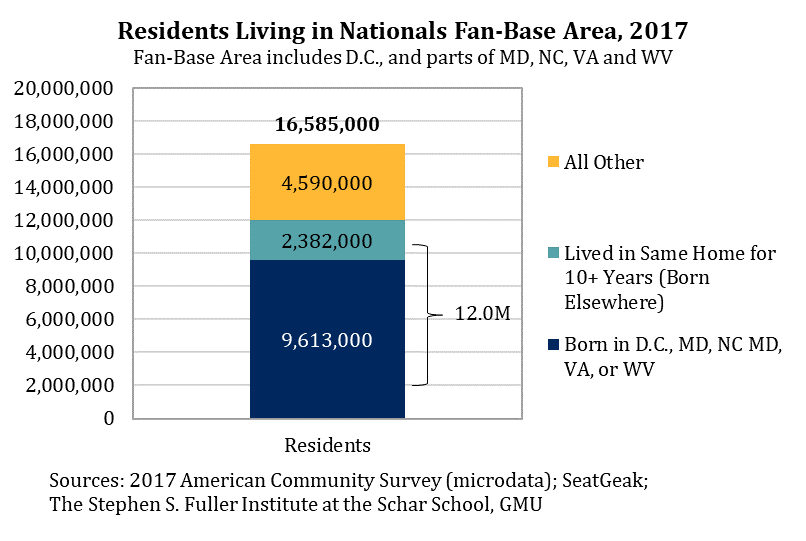While there are no data that directly measure the length-of-fandom, there are data that can measure how many residents have roots in the area.
SeatGeek has a map of the most popular MLB team in each county. The Nats fan-base area includes southern Maryland, D.C. eastern West Virginia, most of Virginia and the northern and eastern parts of North Carolina. This region was home to 16.6 million people in 2017. Data are not available on how long these residents have lived in this area, but there are data on 1) state of birth and 2) length of time in home. These are the best proxies available to measure which residents have stronger ties to the Nats area.
Of the 16.6 million living in the Nats fan-base area, 9.6 million were born in one of these three states or the District of Columbia. An additional 2.4 million had lived in their home for more than 10 years. These 12.0 million people have strong ties to the Nats fan-base area and can claim longer-term loyalty to the Nats.

How does this stack up against the Astros? Their fan-base area includes southern Texas and southern Louisiana and was home to 19.3 million people as of 2017. Of these, 12.7 million were born in either Texas or Louisiana and another 2.2 million had lived in the same home for more than 10 years. The total of 14.9 million people with stronger ties to the Astros fan-base area is larger than the equivalent for the Nats, but not by as much as some might assume.

About These Data
All data are from the U.S. Census Bureau’s 2017 American Community Survey microdata. The fan-base areas are from SeatGeek: https://seatgeek.com/tba/articles/where-do-mlb-fans-live-mapping-baseball-fandom-across-the-u-s/. These counties were crosswalked the the Public Use Micro Areas (PUMA) and there are minor differences due to the PUMA boundaries.
